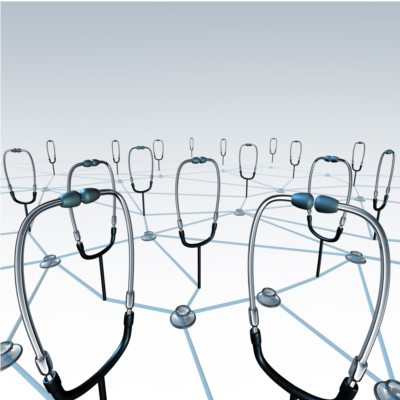
Many organizations map between different US procedure coding systems (CPT®, ICD-9-CM, ICD-10-PCS) for multiple use cases. A common requirement was to map from CPT to ICD-9-CM procedures for analytics. The switchover from ICD-9-CM procedure codes to ICD-10-PCS effective October 1, 2015 has presented a unique challenge to mapping CPT to ICD-10-PCS, because ICD-10-PCS is very different from ICD-9-CM procedures. This undertaking can be overwhelming without a clear understanding of the unique features inherent in these two diverse classification systems. A side-by-side comparison of the 2018 edition of each system as seen below illustrates these differences.
|
Classification System: |
CPT |
ICD-10-PCS |
|
Purpose: |
Report services performed by physicians and other qualified heath care professionals in outpatient setting |
Report hospital inpatient services |
|
Number of codes: |
10,177 |
78,705 |
|
Length of codes: |
5-characters |
7-characters |
|
Modifiers: |
2-character modifier(s), where appropriate, reported separately |
No modifiers |
|
Structure of codes: |
Unique numeric only codes (e.g., 76120) and numeric with 5th-character alpha (e.g., 0001U) |
Each character has unique meaning within its position in the code and is assigned depending on intent/type of procedure done |
|
Reuse of codes: |
Deleted codes are sometimes reused after 4-5 years with a completely different description |
No reuse of deleted codes |
|
Use of eponyms (e.g., Marshall-Marchetti-Krantz) and Latin: |
Yes |
No |
|
Use of diagnosis in description: |
Yes |
No |
|
Multiple services/procedures per code: |
Yes |
No |
|
Multiple anatomic sites per code: |
Yes |
|
|
Use of measurements (e.g., % body surface, simple/extensive, etc.): |
Yes |
No |
|
Staged procedures: |
Yes |
No |
|
Conditional statements (e.g., with/without, if performed, when performed): |
Yes |
No |
|
Approach to procedure included: |
Frequently |
Yes |
|
Laterality included: |
No, use separately reportable 2-character modifier(s), where appropriate |
Yes |
|
Anesthesia, laboratory, performance measurements and clinician visits included: |
Yes |
No |
These differences mean that mapping from one classification to the other, such as from CPT to ICD-10-PCS, could be one to one (clinically equivalent procedures or potential matches), one to none (ICD-10-PCS does not have a clinically equivalent code) or one to many (being more granular, ICD-10-PCS has many codes that could be a close enough match to the CPT code, and additional information from the patient’s record would be needed to make a choice). Examples are provided below.
|
One to One |
CPT® |
47562 |
Laparoscopy, surgical; cholecystectomy |
|
PCS |
0FT44ZZ |
Resection of Gallbladder, Percutaneous Endoscopic Approach |
|
|
One to None |
CPT® |
21499 |
Unlisted musculoskeletal procedure, head |
|
PCS |
Null |
||
|
One to Many |
CPT® |
12006 |
Simple repair of superficial wounds of scalp, neck, axillae, external genitalia, trunk and/or extremities (including hands and feet); 20.1 cm to 30.0 cm |
|
PCS |
0HQ0XZZ |
Repair Scalp Skin, External Approach |
|
|
PCS |
0HQ4XZZ |
Repair Neck Skin, External Approach |
|
|
PCS |
0XQ4XZZ |
Repair Right Axilla, External Approach |
|
|
PCS |
0XQ5XZZ |
Repair Left Axilla, External Approach |
|
|
PCS |
0UQGXZZ |
Repair Vagina, External Approach |
|
|
PCS |
0UQJXZZ |
Repair Clitoris, External Approach |
|
|
PCS |
0UQMXZZ |
Repair Vulva, External Approach |
|
|
PCS |
0VQ5XZZ |
Repair Scrotum, External Approach |
|
|
PCS |
0VQSXZZ |
Repair Penis, External Approach |
|
|
PCS |
0VQTXZZ |
Repair Prepuce, External Approach |
|
|
PCS |
0HQ5XZZ |
Repair Chest Skin, External Approach |
|
|
PCS |
0HQ7XZZ |
Repair Abdomen Skin, External Approach |
|
|
PCS |
0HQBXZZ |
Repair Right Upper Arm Skin, External Approach |
|
|
PCS |
0HQCXZZ |
Repair Left Upper Arm Skin, External Approach |
|
|
PCS |
0HQDXZZ |
Repair Right Lower Arm Skin, External Approach |
|
|
PCS |
0HQEXZZ |
Repair Left Lower Arm Skin, External Approach |
|
|
PCS |
0HQFXZZ |
Repair Right Hand Skin, External Approach |
|
|
PCS |
0HQGXZZ |
Repair Left Hand Skin, External Approach |
|
|
PCS |
0HQHXZZ |
Repair Right Upper Leg Skin, External Approach |
|
|
PCS |
0HQJXZZ |
Repair Left Upper Leg Skin, External Approach |
|
|
PCS |
0HQKXZZ |
Repair Right Lower Leg Skin, External Approach |
|
|
PCS |
0HQLXZZ |
Repair Left Lower Leg Skin, External Approach |
|
|
PCS |
0HQMXZZ |
Repair Right Foot Skin, External Approach |
|
|
PCS |
0HQNXZZ |
Repair Left Foot Skin, External Approach |
|
As you can see, any one of the differences between the classification systems would make the mapping from one to the other difficult. Considering all the variations could make the mapping unwieldy and ineffective. It can be done, however, if clear objectives and heuristics are outlined at the onset of the project, to guide the mapping choices. If you have questions or would like assistance with mapping projects , please contact us .

